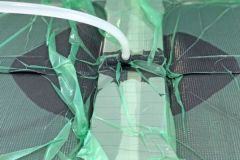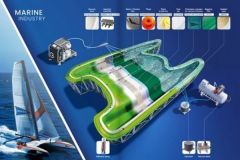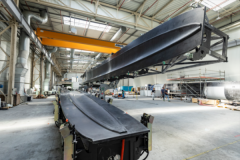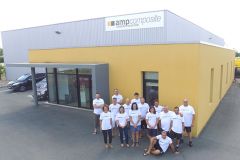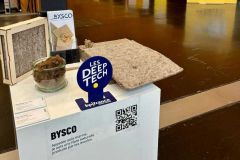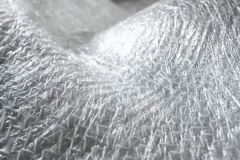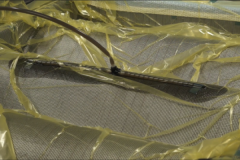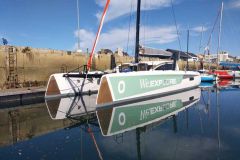Saerfoam: a reinforced structural core
Saertex, founded in 1982 in Saerbeck, Germany, specializes in the manufacture of multiaxial fabrics made of glass, carbon or aramid fibres for composite construction. With a strong presence in the nautical and wind power markets, it has been developing and marketing Saerfoam since 2010. It is a polyurethane (PU) foam, incorporating oriented glass fibers allowing the recovery of 3D forces. The density of fibreglass bridges is modulated according to mechanical characteristics, including shear, and expected weight.

A multi-resin product
Saerfoam requires vacuum processing for good fibre impregnation. It is particularly suitable for infusion or RTM process. Thanks to a multi-compatible fiberglass, Saerfoam can be integrated into a sandwich with epoxy, vinylester or polyester resin. Its mechanical performance, detailed in Saertex brochures, will depend on the resin used.
Get the best weight/rigidity ratio
"In boating, what is mainly asked of the sandwich's core is rigidity. There are 2 main families: the natural ones with balsa wood, which is heavy but very rigid and the synthetic foam cores, very light, but less rigid. The Saerfoam is placed between the two for a better stiffness to weight ratio," explains Nicolas Vernin, Saerfoam product manager.
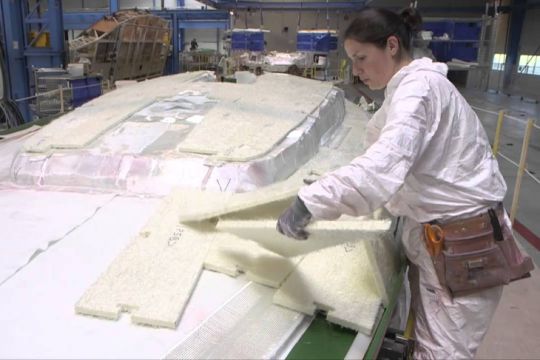
No moisture, no delamination
Thanks to the cohesion of the sandwich skins provided by the resin-impregnated glass bridges, the risk of delamination of the composite part is greatly reduced by Saerfoam, compared to a traditional core. The absorption of water by the Saerfoam, less than 1%, even after impact, makes it particularly suitable for use in water sports.
Controlled cost and customer support
Patented and certified by Bureau Veritas, Saerfoam remains competitive against balsa and PVC, while providing technological benefits. With a product made in France and cut on site, Saertex ensures the shipyard a good availability, at a time when balsa can be difficult to find.
Widely used for decks and bulkheads, Saerfoam is available in thicknesses from 10 to 30 mm and in grid form for complex shapes. Higher thicknesses are under development.




